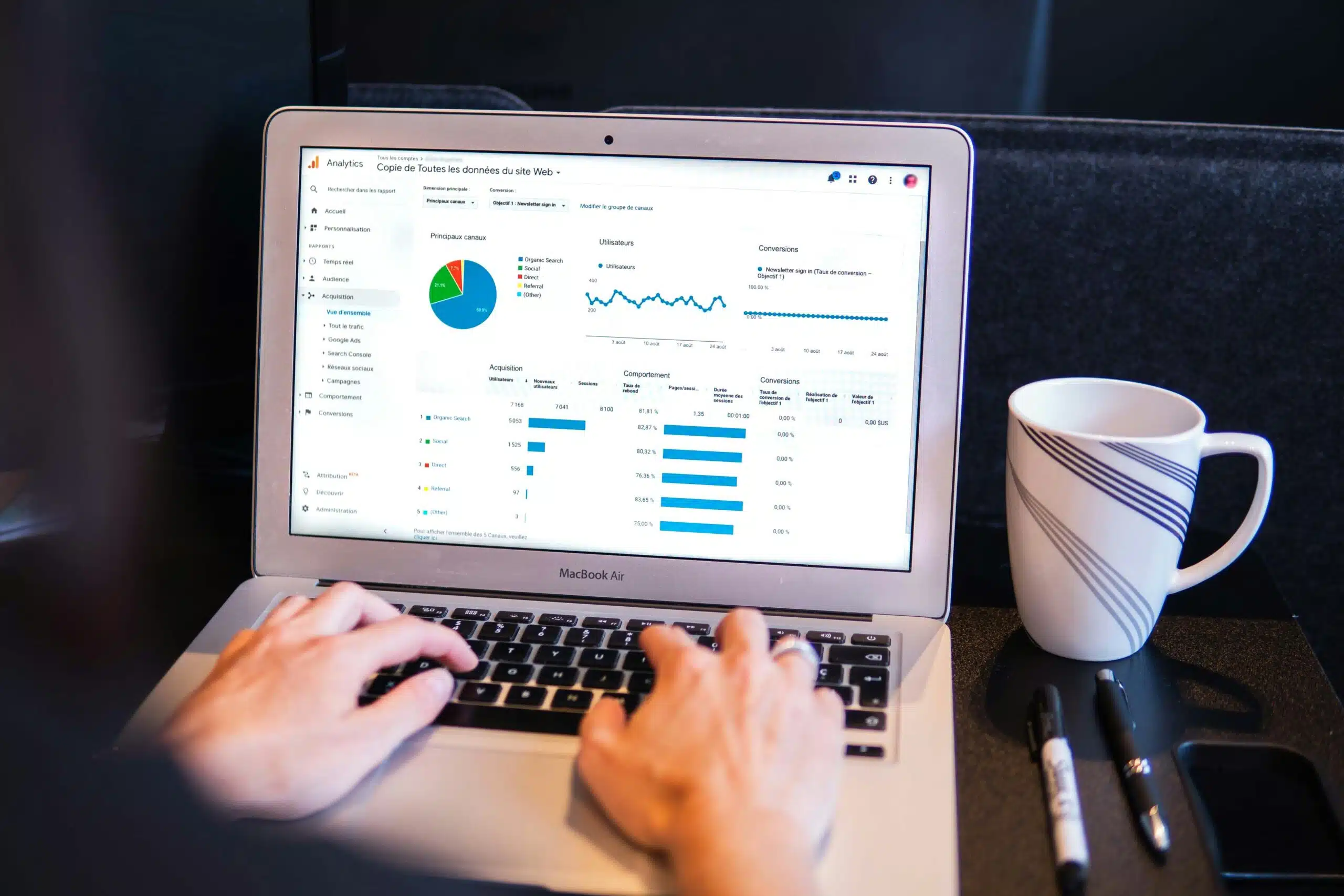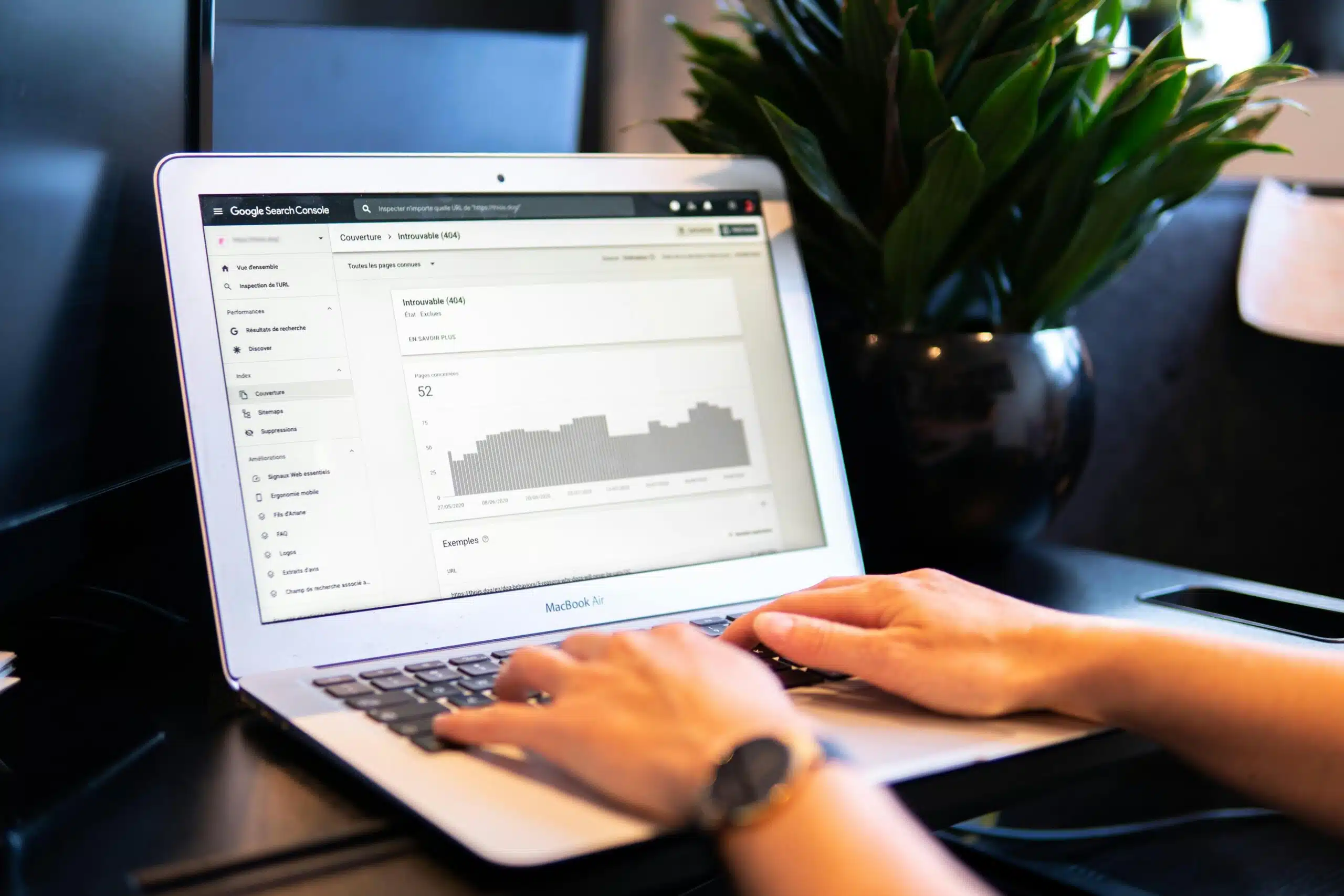Tracking Local SEO performance is vital for businesses looking to increase their visibility in local search results. By measuring key metrics like local rankings, user interactions, and listing engagement, businesses can uncover actionable insights about customer behavior and competitive positioning. This post explores the core benefits of local SEO tracking, essential tools to simplify the process, and how to analyze performance data effectively. Readers will also learn how to overcome common tracking challenges and apply insights to refine their local marketing strategies—ultimately driving higher local rankings, more foot traffic, and increased customer engagement.
Key Takeaways
- Local SEO is essential for attracting customers within specific geographic areas
- Analyzing user behavior helps tailor marketing strategies for better engagement
- Utilizing reliable tracking tools ensures accurate data and informed decision-making
- Regular competitor analysis aids in adapting strategies and maintaining a competitive edge
- Optimizing for voice search is crucial for connecting with local consumers effectively
Local SEO Performance Tracking for Businesses

Local SEO involves optimizing a business’s digital presence to attract customers within a specific geographic area. Tracking performance is key to understanding how visible a business is in local search results and identifying which strategies drive engagement. By monitoring relevant metrics and search trends, businesses can fine-tune their local SEO efforts to generate more leads, increase foot traffic, and stay competitive in their market.
The Role of Local SEO in Business Visibility
A well-executed local SEO strategy significantly improves a business’s visibility on platforms like Google Search and Google Maps. It ensures that when users search for services “near me” or within a defined location, your business appears in relevant local listings. Optimizing for factors such as Google Business Profile accuracy, local keyword targeting, and consistent citation management helps increase discoverability and drive in-market traffic.
Key Metrics That Define Local SEO Performance
To effectively measure local SEO success, businesses should focus on actionable metrics such as:
- Local pack rankings for priority keywords
- Google Business Profile insights (views, clicks, direction requests, calls)
- NAP consistency across citation sources
- Click-through rates from local search listings
- Engagement signals such as dwell time and call-to-action conversions
Tracking these metrics provides a clear view of how a business is performing in its local search landscape and highlights areas that need improvement.
Interpreting User Behavior Through Local Search Data
Understanding how users interact with local search listings helps businesses tailor their content and engagement strategies. Monitoring ranking fluctuations, call-to-action performance, and device-specific behavior (e.g., mobile search trends) reveals what drives users to take action. This behavior-driven insight allows businesses to align content, offers, and user experience with local search intent—improving both visibility and conversion potential.
The Benefits of Tracking Local SEO Performance

Tracking local SEO performance equips businesses with the insights needed to strengthen their presence in local search results. It enables data-informed decisions that improve local visibility, attract high-intent customers, and refine marketing strategies based on real-world user behavior. With consistent monitoring, businesses can identify what’s working, adjust quickly to local trends, and outperform competitors in their target regions.
Boosting Local Search Visibility
Improving rankings in local search results is one of the most direct benefits of SEO performance tracking. By monitoring keyword performance, local pack placements, and visibility trends over time, businesses can identify optimization opportunities. Strategies such as local link building, consistent NAP citations, and Google Business Profile enhancements directly influence how prominently a business appears in geographically targeted searches.
Uncovering Customer Behavior and Preferences
Tracking user interactions—such as clicks, direction requests, and calls from local listings—provides a clearer picture of what local customers want and how they engage with your business online. This behavioral data helps refine offers, optimize landing pages, and create content that aligns with real-time demand. Rather than guessing customer needs, businesses can use performance data to deliver more personalized and relevant experiences.
| Aspect | What It Reveals |
|---|---|
| Customer Preferences | Top services/products sought by local users |
| User Behavior | How users engage with local listings and calls to action |
| Efficiency | Which strategies convert best based on tracking data |
| Search Trends | Emerging keyword opportunities at the local level |
| Listing Engagement | Clicks, calls, reviews, and direction requests from local maps |
Making Smarter, Data-Driven Marketing Decisions
Local SEO tracking supports agile marketing. When businesses consistently monitor analytics like conversion rates, review activity, or traffic by device/location, they can shift budget and strategy toward the highest-performing tactics. Whether it’s updating business listings, optimizing for voice search, or doubling down on high-converting content, these decisions are grounded in measurable outcomes—not assumptions. This data-driven approach increases ROI and ensures continuous local growth.
Tools and Software for Local SEO Performance Tracking

Leveraging the right tools is critical for effectively tracking and improving local SEO performance. From monitoring local rankings to analyzing listing engagement and customer actions, the right software can help businesses uncover valuable insights and fine-tune their strategies. This section explores essential tool features and the differences between free and paid solutions to help businesses make informed choices based on their goals and resources.
Overview of Popular Local SEO Tracking Tools
Local SEO tracking platforms offer a range of capabilities—from monitoring keyword rankings in specific locations to tracking reviews, listing accuracy, and competitor visibility. Tools like Google Business Profile Insights, BrightLocal, Whitespark, and Semrush (Local features) are commonly used to assess:
- Map pack rankings
- Customer actions (clicks, calls, direction requests)
- Review trends and reputation signals
- Citation consistency across directories
These tools help businesses evaluate their local presence and adjust tactics based on real-world search data and customer interactions.
Key Features to Look for in Local SEO Tools
When evaluating local SEO tools, businesses should prioritize features that support location-specific tracking and decision-making. The most valuable tools typically include:
- Local keyword rank tracking (with ZIP code or city-level granularity)
- Google Business Profile integration for direct performance reporting
- Review monitoring and alerting
- Citation auditing and tracking
- Competitor benchmarking in local SERPs
These features allow businesses to monitor what matters most in local visibility—ensuring their listings stay optimized, relevant, and competitive.
Free vs. Paid Local SEO Tracking Options
Choosing between free and paid tools depends on the complexity of your local SEO strategy.
| Option Type | Best For | Limitations | Examples |
|---|---|---|---|
| Free Tools | Beginners or small businesses | Limited customization, surface-level insights | Google Business Profile Insights, Google Search Console |
| Paid Tools | Multi-location businesses, agencies, or competitive markets | Cost commitment | BrightLocal, Whitespark, Semrush Local, Yext |
Free tools offer a solid foundation for basic tracking, while paid solutions deliver deeper analytics, automation, and advanced reporting—ideal for businesses looking to scale or manage multiple locations.
Interpreting Local SEO Performance Data

Effectively interpreting local SEO data is critical for making informed decisions that improve visibility and customer engagement. By analyzing trends, metrics, and user interactions, businesses can uncover what’s driving performance—and what needs to be adjusted. Translating data into actionable strategies gives businesses a competitive edge in local markets.
Understanding Analytics and Metrics Reporting
Analytics and reporting are the backbone of local SEO performance tracking. With tools like Google Business Profile Insights and local rank trackers, businesses can monitor vital metrics such as:
- Profile views
- Direction requests
- Calls and clicks
- Keyword rankings
- Engagement by device or time of day
Using automation and centralized dashboards streamlines data collection, enabling faster analysis and clearer decision-making. These insights help fine-tune website elements, optimize listings, and ensure a smoother user experience that aligns with local search intent.
Visualizing Performance Trends Over Time
Visualizing local SEO trends through charts and graphs helps identify patterns and shifts in user behavior. Tracking changes in rankings, engagement, and traffic at the city or ZIP-code level enables businesses to pinpoint:
| Trend | Insight |
|---|---|
| Increase in Local Searches | Indicates rising interest in local offerings—opportunity for content expansion. |
| Drop in Engagement | May signal UX issues or declining relevance—requires a content or design review. |
| Keyword Ranking Fluctuations | Reflect evolving search intent—guide future keyword and content strategy. |
This level of visibility enables teams to respond proactively—adjusting strategies before small issues become major performance gaps.
Making Smart, Data-Driven Strategy Adjustments
Data should guide your next move. Whether it’s discovering that updated business hours led to higher clicks, or that new photos boosted listing engagement, small changes backed by data can deliver measurable impact. By regularly reviewing analytics:
- High-performing tactics can be scaled
- Underperforming listings or pages can be optimized
- New content can target shifting customer interests
This iterative, insight-driven approach ensures continuous improvement and long-term local SEO success.
Common Challenges in Local SEO Performance Tracking

While tracking local SEO performance is essential, businesses often encounter key obstacles that can compromise accuracy, strategy alignment, and long-term growth. From unreliable data to technical tool limitations and unbalanced marketing efforts, these challenges must be addressed to maximize the impact of local SEO. Proactively managing these issues ensures businesses maintain accurate visibility, make smarter decisions, and drive sustainable engagement in their target markets.
1. Addressing Inaccurate Data Insights
One of the most common pitfalls in local SEO tracking is acting on flawed or incomplete data. Errors in location targeting, duplicate listings, or outdated analytics can skew results—leading to misguided strategy decisions and poor user targeting.
Solution: Conduct routine audits of your local SEO data sources. Ensure:
- NAP (Name, Address, Phone) consistency across directories
- Correct location settings in analytics tools
- Real-time syncing with platforms like Google Business Profile
Using dependable tools that provide geo-specific insights helps maintain accuracy and ensures that performance metrics reflect actual customer behavior.
2. Resolving Technical Issues with Tracking Tools
Technical limitations in tracking software—such as compatibility issues, data lags, or poor UX—can prevent accurate reporting. If performance metrics aren’t syncing or pulling correct data, analysis and decision-making suffer.
Solution: Invest in reputable local SEO platforms that offer:
- API integrations with major platforms (Google, Yelp, Bing)
- Regular updates and support
- Transparent and customizable reporting
Additionally, schedule periodic system checks to ensure tracking configurations remain aligned with current business objectives and tool capabilities.
3. Balancing Local SEO with Broader Marketing Efforts
Focusing exclusively on local SEO without integrating it into a wider marketing ecosystem can limit growth. Businesses may neglect other channels like social media, email, or content marketing—causing missed opportunities for brand-building and customer acquisition.
Solution: Adopt an integrated marketing strategy where local SEO complements broader digital efforts. This includes:
- Sharing locally optimized content via email and social channels
- Coordinating campaigns across paid and organic channels
- Aligning brand messaging across local and national touchpoints
| Challenge | Recommended Solution |
|---|---|
| Overemphasis on Local SEO | Integrate with holistic strategies to maintain a balanced marketing approach |
| Neglect of Other Channels | Diversify efforts across SEO, content, and social media |
| Limited Geographic Reach | Combine local efforts with broader visibility tactics for greater brand impact |
Future Trends in Local SEO Performance Tracking

As the local search continues to evolve, staying ahead of emerging trends is essential for maintaining visibility and a competitive edge. Advancements in AI shifts in consumer behavior, and ongoing algorithm updates are transforming how businesses approach local SEO performance tracking. By adapting early, businesses can refine their strategies and stay aligned with what matters most to local customers.
The Impact of AI and Machine Learning on Local SEO Tracking
Artificial intelligence and machine learning are revolutionizing local SEO tracking by enabling faster, more accurate data interpretation. These technologies help uncover deeper patterns in user behavior, search intent, and ranking fluctuations—insights that would be difficult to identify manually.
Benefits of AI-driven tracking include:
- Predictive analytics for ranking performance
- Automated alerts for traffic or engagement drops
- Improved segmentation by location, device, or behavior
As AI continues to mature, it will play a larger role in personalizing local SEO strategies and streamlining reporting across multi-location businesses.
Emerging Shifts in Consumer Search Behavior
Consumer search habits constantly evolve, and businesses must adapt their local SEO strategies accordingly. The growing use of voice search, increased reliance on mobile devices, and stronger preference for localized content are reshaping how users discover nearby services.
| Trend | SEO Implication |
|---|---|
| Voice Search Growth | Requires content optimized for conversational, question-based queries |
| Mobile Search Dominance | Demands fast, responsive websites and click-to-call functionality |
| Local Intent Priority | Emphasizes the need for geo-specific keywords and location-rich content structures |
To stay visible, businesses should ensure their content aligns with how users are searching—especially as voice assistants and mobile-first behavior become the norm.
Preparing for SEO Algorithm Updates
Search engine algorithms are continually evolving to improve user experience and search accuracy. These updates often impact local pack rankings, review signals, and on-page optimization best practices.
Proactive strategies include:
- Regularly auditing listings and local landing pages
- Monitoring core update impacts on local visibility
- Subscribing to trusted SEO news sources to stay informed
By staying agile and responsive to changes, businesses can minimize disruptions and adjust their tracking efforts to reflect the latest ranking signals.
Conclusion
Tracking local SEO performance is essential for businesses looking to strengthen their online presence and connect with customers in targeted geographic areas. By consistently monitoring key metrics—such as local rankings, user interactions, and listing engagement—businesses can make informed decisions that sharpen their marketing efforts and improve visibility in local search results.
As consumer behavior shifts, especially with the rise of voice search and mobile-first browsing, ongoing analysis and adaptation become even more critical. Businesses that invest in accurate tracking, embrace data-driven strategies, and respond to evolving trends are better positioned to stand out in competitive local markets.
A well-executed and continuously optimized local SEO strategy not only drives more qualified traffic but also builds long-term relationships with local customers—laying the foundation for sustained growth and success.





